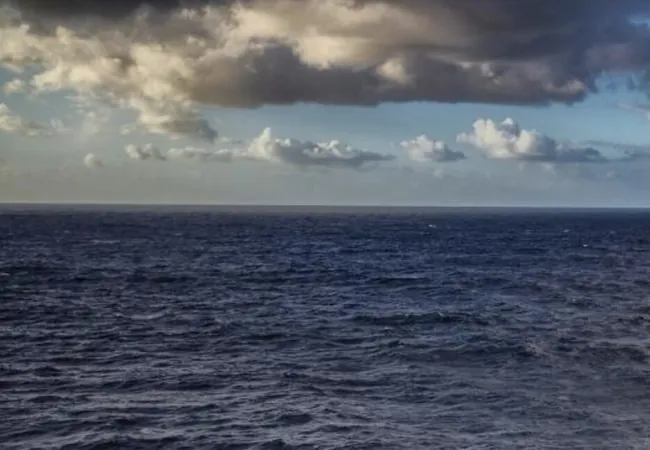
Point Nemo: The Ocean’s Ultimate Graveyard and the Farthest Point from Land
2025-09-14
Author: Nur
Welcome to Point Nemo: Earth’s Most Isolated Spot
Ever wondered where the true "middle of nowhere" is? While it may be philosophically just a couple of hours from your hometown, scientifically, it’s Point Nemo. Nestled at approximately 48°52.6′S and 123°23.6′W, Point Nemo stands as the most remote location on Earth, surrounded by an expanse of ocean with no land in sight.
The Oceanic Pole of Inaccessibility
Known as the oceanic Pole of Inaccessibility, Point Nemo is the answer to an intriguing challenge: the longest swim to land. This problem was tackled by Czech engineer Hrvoje Lukatela, who in 1992 utilized his own software and available coastline data to pinpoint this remote spot. He determined the location is equidistant from three islands: Ducie Island in the Pitcairn Islands, Motu Nui near Rapa Nui, and Maher Island off Antarctica.
Lukatela coined the name "Point Nemo," inspired by Jules Verne’s Captain Nemo, a character who vowed never to set foot on dry land again—making it a fitting namesake for a place so far from shore. While newer calculations in 2022 showed slight shifts, the essence of Point Nemo remains unchanged.
The Growing Problem of Space Junk
As humanity ventures further into space, we’re leaving behind quite a mess. The European Space Agency estimates there are over 40,230 tracked man-made objects in low Earth orbit, not to mention countless smaller debris. The consequences of this space junk are significant, with an average of one piece falling to Earth daily, posing potential hazards to both satellites and people on the ground.
Creative solutions are emerging, from Japan’s wooden satellites to experimental harpoons and nets. However, another pressing issue looms: where do we safely dispose of decommissioned satellites? The answer, it turns out, is Point Nemo, an established graveyard for space debris.
Point Nemo: The Final Resting Place for the ISS
With the International Space Station (ISS) aging and NASA transitioning responsibilities to private companies like SpaceX, plans are underway for the ISS to be decommissioned by 2031, with Point Nemo as its final destination. This isolated spot has been used as a dumping ground for nearly 300 satellites over the past 50 years, including the likes of Mir, the ISS's predecessor.
Interestingly, when the ISS flies over Nemo, it becomes the nearest human habitat. In fact, due to its seclusion, Point Nemo is a unique, albeit quirky, haven—often referred to as an oceanic desert due to its low productivity. While fish might not enjoy the debris, this region’s isolation means they rarely encounter pollution.
The Dilemma of Oceanic Pollution
Despite being a remote dumping ground, concerns linger about the environmental impact. The dumping plan was designed to minimize harm, yet some discarded materials may include radioactive elements, raising questions about the long-term effects on this seemingly desolate part of the ocean.
Point Nemo remains emblematic of humanity's reach—and recklessness—in our quest for exploration. As we face the realities of space debris and the necessity of disposal, Point Nemo serves not only as Earth’s most isolated point but also as a symbol of the future challenges we must navigate in our journey beyond our planet.




 Brasil (PT)
Brasil (PT)
 Canada (EN)
Canada (EN)
 Chile (ES)
Chile (ES)
 Česko (CS)
Česko (CS)
 대한민국 (KO)
대한민국 (KO)
 España (ES)
España (ES)
 France (FR)
France (FR)
 Hong Kong (EN)
Hong Kong (EN)
 Italia (IT)
Italia (IT)
 日本 (JA)
日本 (JA)
 Magyarország (HU)
Magyarország (HU)
 Norge (NO)
Norge (NO)
 Polska (PL)
Polska (PL)
 Schweiz (DE)
Schweiz (DE)
 Singapore (EN)
Singapore (EN)
 Sverige (SV)
Sverige (SV)
 Suomi (FI)
Suomi (FI)
 Türkiye (TR)
Türkiye (TR)
 الإمارات العربية المتحدة (AR)
الإمارات العربية المتحدة (AR)